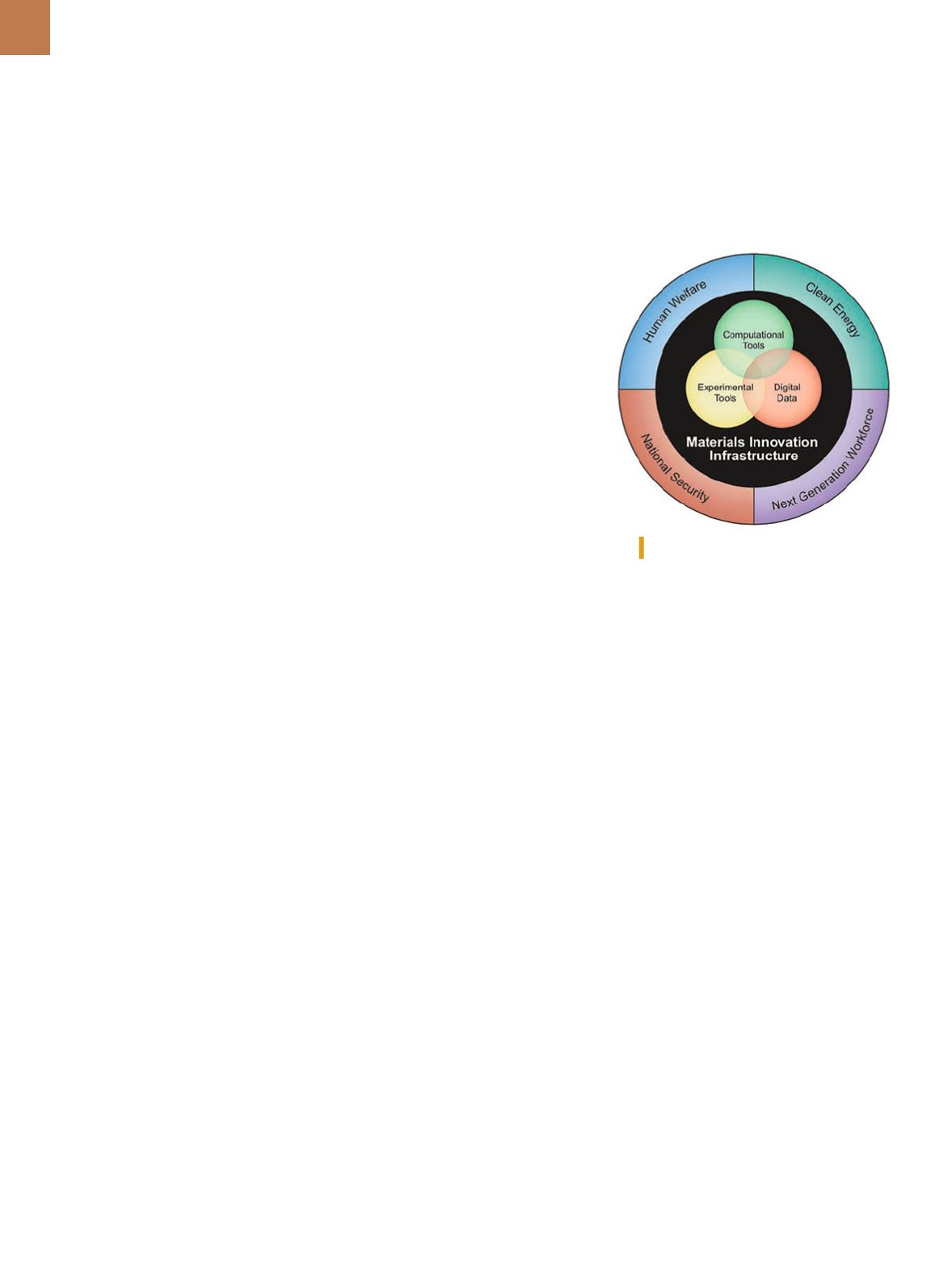

A D V A N C E D M A T E R I A L S & P R O C E S S E S | J U N E 2 0 1 5
3 0
A workshop report released by ASM
International through its Computational
Materials Data Network outlines actions
that professional societies can take to
convene the materials community to
drive development of a materials data
infrastructure: This framework aims to
transform the way the materials com-
munity collaborates on materials and
manufacturing innovation. By focusing
on development of a series of materials
community workshops, the report offers
an approach that can bring the commu-
nity one step closer to the overall goal
of the Materials Genome Initiative—a
future where materials are created and
implemented twice as fast and at a frac-
tion of the cost than they are today.
ASM International convened the
January workshop that resulted in the
new report,
Building the Materials Data
Infrastructure: A Materials Communi-
ty Planning Workshop.
The meeting
brought together representatives from
more than a dozen professional societ-
ies to address the December 2014
Ma-
terials Genome Initiative Strategic Plan
objective to “identify best practices for
implementation of a materials data in-
frastructure.” The meeting focus was to
identify a series of multiagency work-
shops that could engage the different
components of the materials communi-
ty to establish needs, identify barriers,
and define methods to overcome them.
“This timely workshop provided
valuable engagement across disparate
materials communities and addressed
how to identify and overcome the chal-
lenges recently laid out in the 2014
Materials Genome Initiative Strategic
Plan,” says James Warren, technical
program director for materials genom-
ics at the Material Measurement Labo-
ratory of the National Institute of Stan-
dards and Technology.
PROGRESS REPORT:
MATERIALSGENOME INITIATIVE
Technical societies meet to discuss building the materials data infrastructure.
Participants built on an analysis of
previous workshop results and studies
to identify needs and outline a four-year
timeline for future activities that could
address these needs. These actions fall
into three broad categories:
DATA MANAGEMENT
•
Establish a materials data quality
roadmap by convening a broad-
scope workshop supplemented by
later meetings on specific data qual-
ity topics, such as quality standards,
uncertainty quantification, curation
practices, and data gathering
codification.
•
Develop amaterials community data
registry—a listing of databases—by
leveraging experience with existing
data registries in other fields, such as
the Virtual Astronomical Observatory
Registry.
DATA SHARING
•
Develop business models to encour-
age participation in the materials
data infrastructure by conducting
a series of forums with disparate
materials communities.
•
Identify connections between pub-
lishing articles and data through a
series of publishing forums involv-
ing publishers, data generators,
and other stakeholders.
EDUCATION, TRAINING,
AND OUTREACH
•
Develop data management work-
force training through a set of work-
shop efforts, including communica-
tion and training in current tools and
capabilities as well as curriculum
development for both materials pro-
fessionals and those in undergradu-
ate and graduate programs.
Professional societies are uniquely
positioned to lead many of these initia-
tives, as their ability to convene a range
of materials experts across industry,
academia, and national and federal
laboratories is critical to bringing the
materials innovation infrastructure to
fruition.
“The role of professional societ-
ies in supporting the development of
the materials data infrastructure is a
conversation that needs to continue
in order to build a robust and effective
system,” explains Scott Henry, director
of content and knowledge-based solu-
tions at ASM. “With access to a broad
range of expertise as well as the ability
to work across traditional boundaries,
professional societies will continue to
be a driving force toward a future of
rapid and more efficient materials and
manufacturing innovation.”
For more information and to ac-
cess the full report, visit
asminterna- tional.org/web/cmdnetwork.
~AM&P
Courtesy of whitehouse.gov.


















